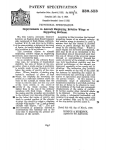Aviator168
Member
Hi,
There a lot of dicussion on this matter, like if the thrust line is above the center of mass, it is going to cause PPO. But I have never seen any discussion on what is going to happen if the issue of if the thrust line is below the center of mass. Is this going to hurt performance or it is out right dangerous? Your takes.
There a lot of dicussion on this matter, like if the thrust line is above the center of mass, it is going to cause PPO. But I have never seen any discussion on what is going to happen if the issue of if the thrust line is below the center of mass. Is this going to hurt performance or it is out right dangerous? Your takes.

